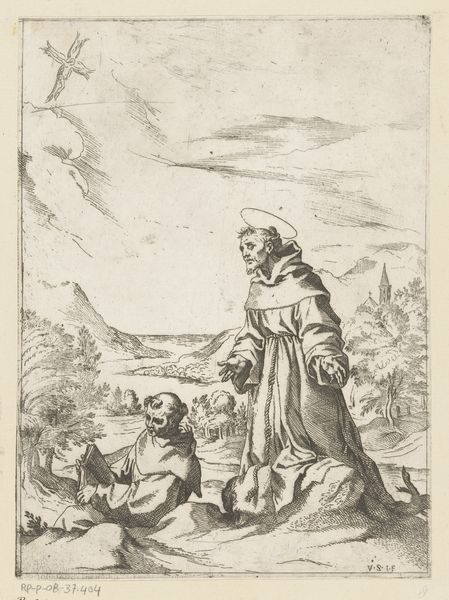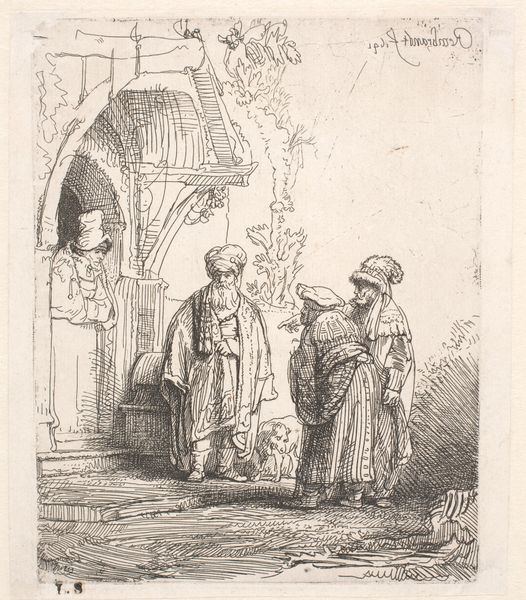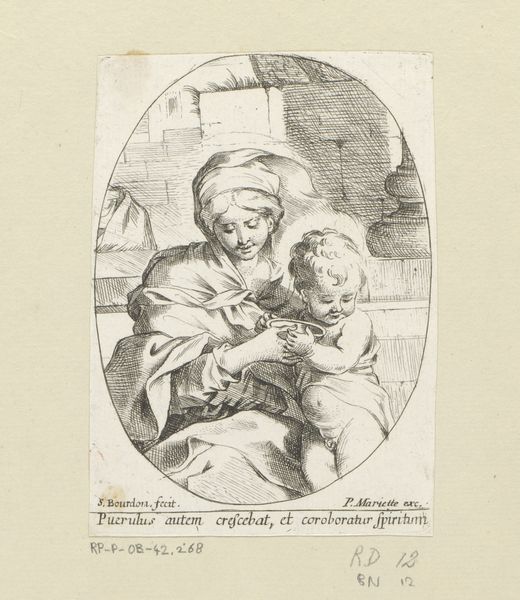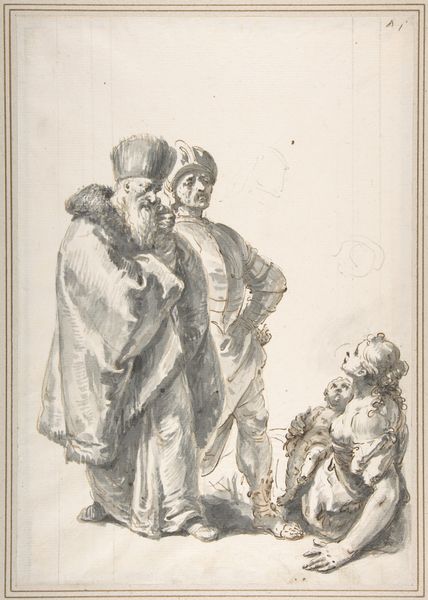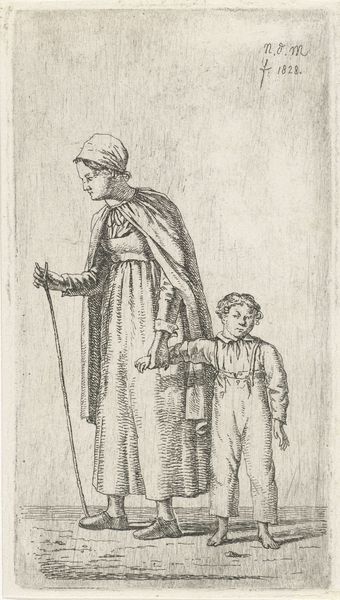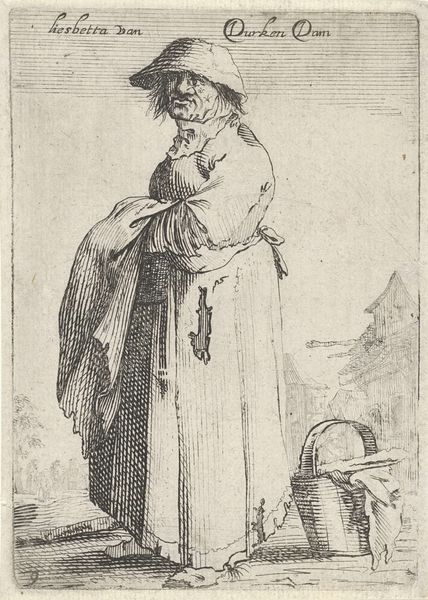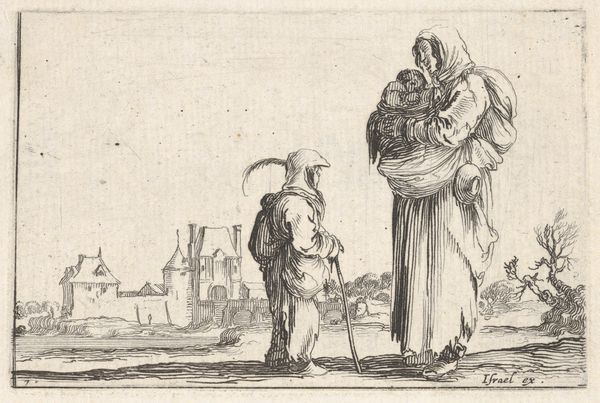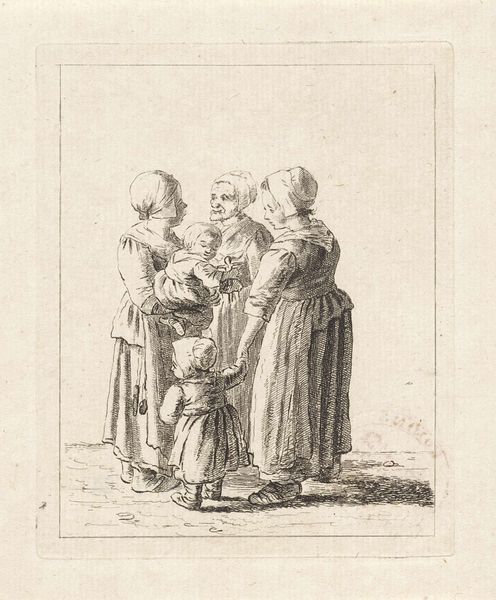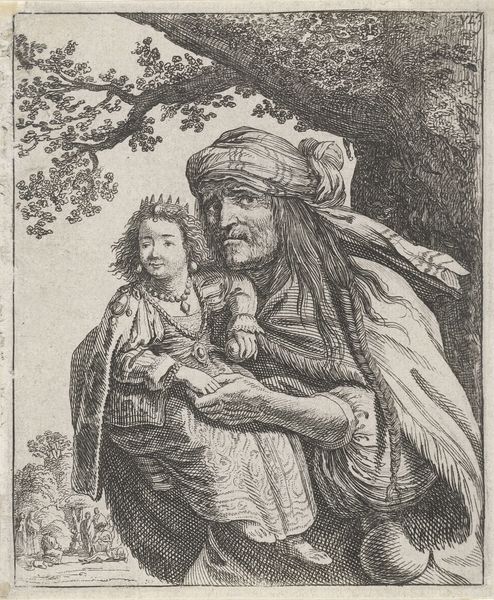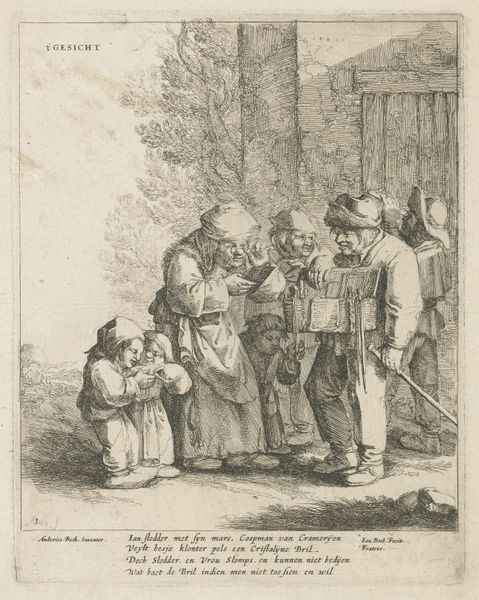
drawing, print, etching, ink
#
portrait
#
drawing
#
narrative-art
#
baroque
# print
#
etching
#
pencil sketch
#
figuration
#
ink
#
pen-ink sketch
Dimensions: height 107 mm, width 76 mm
Copyright: Rijks Museum: Open Domain
Curator: Welcome. Before us we have an etching attributed to Rembrandt van Rijn, made around 1640. It’s titled "Old Man Facing a Boy". The work is part of the Rijksmuseum collection. Editor: It strikes me immediately as a scene of immense narrative potential, almost stage-like. The stark contrasts amplify the emotional distance, despite their physical proximity. The fragility of the lines really adds to this sense of suspended tension. Curator: Let’s consider the broader socio-political environment in the Dutch Republic at this time. The growth of trade and wealth contributed to an expanding middle class that fueled artistic innovation. This scene isn't a formal commission, yet seems deeply engaged in contemporary humanist values. Editor: Absolutely. Look at the clothing: it points toward an intersection of class and religious representation in that time. Are we meant to consider this intergenerational moment through the lens of socioeconomic mobility? It feels very much tied into the discussions of civic duty being represented across various forms of public arts engagement at that time. Curator: I appreciate your focus on the narrative framing, the possible interpretations seem endless. I would draw attention to the use of chiaroscuro and the contrast between youth and age; and also a questioning about power dynamics here - whether they may involve some vulnerability, mentorship or potential conflict between two representatives across different demographics of race, class or gender. Editor: And to what end is this questioning geared? In these close confines – within the literal frame and perhaps figuratively also in life – does this exchange offer a possibility for dialogue between societal segments otherwise separated, perhaps by barriers rooted in wealth disparities of gendered/classed hierarchies? Curator: Yes. These considerations expand to encompass dialogues around social progress—who shapes progress and whose perspectives prevail as its standards, even still in contemporary society. Editor: So we see an invitation to consider these social questions within one symbolic artistic work from seventeenth-century Holland: questions still very vital to how we envision more equitable frameworks for change and future in this current society today Curator: Indeed. It demonstrates how even centuries-old artworks provide platforms to confront contemporary discussions on social injustice, identity formations, gender inequalities, and their implications in both historic context and their resonance to inform new paradigms as future societies evolve.
Comments
No comments
Be the first to comment and join the conversation on the ultimate creative platform.
